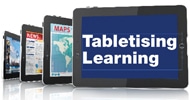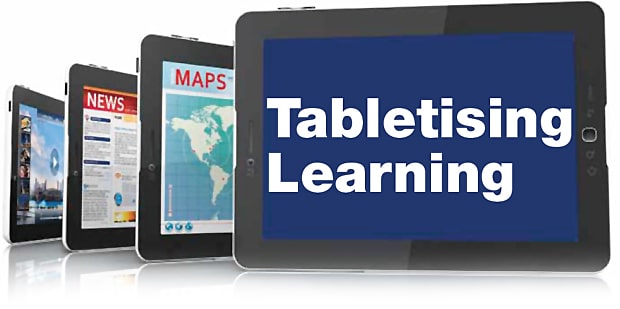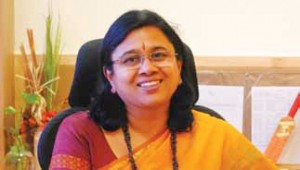

In a very short span of time, tablets have carved a niche for themselves in the modern education space. digitalLEARNING interacted with a host of schools and higher education leaders to gain insight into the real potential of tablets in education space
Adilakshmi Chintalapati, Principal, Oakridge International School
 As Head of one of the first schools in Andhra Pradesh to introduce Technology in Teaching and bring in the concept of a Smart school, I believe that tablets have helped to bring a paradigm shift in the Teaching and Learning process. The 21st century learners need to be a critical and creative thinker who can work collaboratively towards designing and solving problems. Easy access to content and information has reduced the relevance of memorising facts and figures. Students today need to connect their learning to real world situations and apply what they learn.
As Head of one of the first schools in Andhra Pradesh to introduce Technology in Teaching and bring in the concept of a Smart school, I believe that tablets have helped to bring a paradigm shift in the Teaching and Learning process. The 21st century learners need to be a critical and creative thinker who can work collaboratively towards designing and solving problems. Easy access to content and information has reduced the relevance of memorising facts and figures. Students today need to connect their learning to real world situations and apply what they learn.
From desktop PC to laptop and now Tablets, the medium is only getting better. In a classroom where every child and the teacher have a Tablet that is connected to the WiFi, learning becomes both independent and collaborative. Teachers can both differentiate as well as teach to the group. It supports all kinds of learners and frees up a lot of space besides reducing paper. With all the content of the textbooks and more available on the Tablet, school bags will be lighter and children happier.
As students are introduced to technological tools in classrooms and beyond, the first and most important quality that we need to imbibe is integrity and academic honesty. There is always the temptation to stray away from the task on hand and get lost in the maze of the web. Most equipments designed for usage in schools have features that restrict browsing to only what is relevant for learning. School firewalls also take care of controlling visits to unwanted sites. However the quality of internal discipline needs to be built.
At Oakridge International School, we have multimedia enabled classrooms with smart boards and internet connectivity. We are currently exploring the option of introducing tablets in our classrooms. We did a pilot programme during the summer camp this year and were amazed to see how well children who are only three or four years old take to these devices.
G R Sivakumar, Principal, Delhi Public School, Surat
 At DPS Surat, we have tried all options over the last nine years: Projectors, Interactive boards with Projectors and a whole host of variants of the interactive board. However, on the ground our research shows that teachers are quite comfortable with operating the television. So we have given all our teachers iPads. In our classrooms, we have 50 inch televisions, in which the teachers can plug in their input devices. The iPad makes up for the interactivity in an excellent way. This can be projected onto the TV with sound and without loss of resolution to a large extent.”
At DPS Surat, we have tried all options over the last nine years: Projectors, Interactive boards with Projectors and a whole host of variants of the interactive board. However, on the ground our research shows that teachers are quite comfortable with operating the television. So we have given all our teachers iPads. In our classrooms, we have 50 inch televisions, in which the teachers can plug in their input devices. The iPad makes up for the interactivity in an excellent way. This can be projected onto the TV with sound and without loss of resolution to a large extent.”
RK Sharma, Principal, Somany Vidyapeeth Public School
Education is a wide term; it starts with birth and ends with death. In ancient time, knowledge was transferred from Guru to disciple verbally and it was learnt by heart. Later on text came and it underwent lot of change by revolution in print media. Twenty first century is all about e-learning, e-library, e-book, e-governance, e-news letter, etc.
Apple made a great push in to education when the company introduced text book for iPad. Tablets are no longer only a fun device, they are clearly an efficient device for education. Recently the middle school students proficiency test was measured to test the difference in abilities of students using the traditional text books and students using Tablets. Among those who used the text book 59 percent were proficient and 78 percent were proficient. those used Tablets.
In 21st century keeping the child away from the technology is not justified. We should be logical and have pace with modern age. As an educator, I feel Tablets are essential part of joyful and creative teaching learning process. Now educational and technological links are warming up and are being rapidly backed by best academicians and top IT professionals.
Dr Rajeev Kumar Chauhan, Principal, Raffles International School, Behror Campus
Tablets are most student friendly device. Through use of tablets incredible amount of interest can be brought into the process of learning. We at Raffles have developed Tablet classrooms for our students.
Devang Khakhar, Director, IIT Bombay
 Low cost tablet computers can have many uses in school and college education. For a start, all textbooks could be made available on tablets reducing the costs of printing and distribution and also reducing the weight of school bags. Tablets would enable interactive lessons for self-learning as well as for viewing recorded lectures. They could be used to access educational content on the internet. The small size of the tablets and their low cost enables them to be carried to the classroom by each student and they could be used for conducting mini in-class quizzes. Finally, they could be used as a computer for small scientific and engineering calculations.
Low cost tablet computers can have many uses in school and college education. For a start, all textbooks could be made available on tablets reducing the costs of printing and distribution and also reducing the weight of school bags. Tablets would enable interactive lessons for self-learning as well as for viewing recorded lectures. They could be used to access educational content on the internet. The small size of the tablets and their low cost enables them to be carried to the classroom by each student and they could be used for conducting mini in-class quizzes. Finally, they could be used as a computer for small scientific and engineering calculations.
It is important to have sufficient free and open source content available for wide and effective use of tablets in education. We need open repositories where such content can be shared and simple frameworks to enable teachers and students to develop the content and contribute to the repository. Equally important to creating content is the integration of such material into the teaching and learning programmes of schools and colleges. Unless this is done, even if excellent content is generated, it will not be used.




















